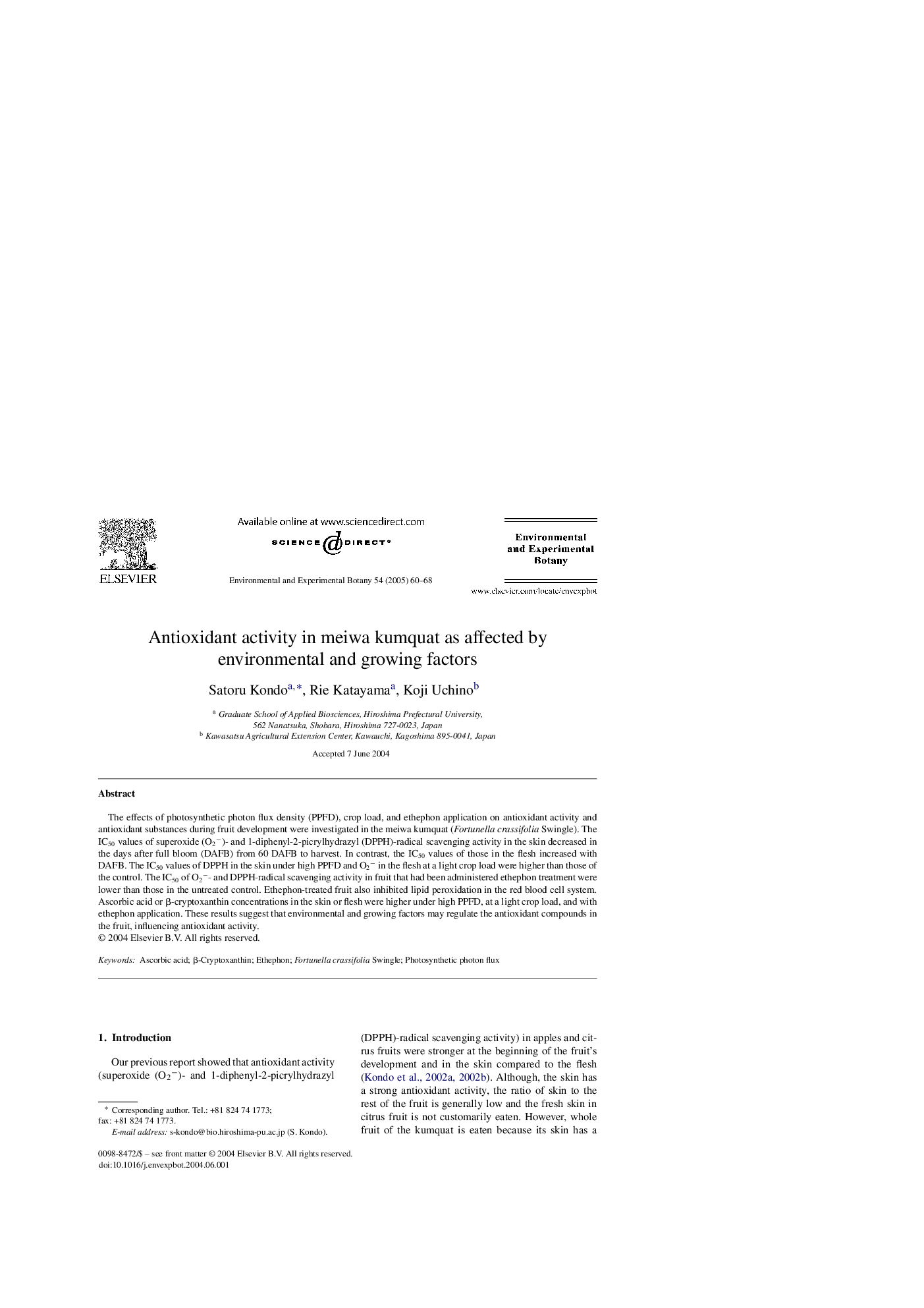| Article ID | Journal | Published Year | Pages | File Type |
|---|---|---|---|---|
| 9485716 | Environmental and Experimental Botany | 2005 | 9 Pages |
Abstract
The effects of photosynthetic photon flux density (PPFD), crop load, and ethephon application on antioxidant activity and antioxidant substances during fruit development were investigated in the meiwa kumquat (Fortunella crassifolia Swingle). The IC50 values of superoxide (O2â)- and 1-diphenyl-2-picrylhydrazyl (DPPH)-radical scavenging activity in the skin decreased in the days after full bloom (DAFB) from 60 DAFB to harvest. In contrast, the IC50 values of those in the flesh increased with DAFB. The IC50 values of DPPH in the skin under high PPFD and O2â in the flesh at a light crop load were higher than those of the control. The IC50 of O2â- and DPPH-radical scavenging activity in fruit that had been administered ethephon treatment were lower than those in the untreated control. Ethephon-treated fruit also inhibited lipid peroxidation in the red blood cell system. Ascorbic acid or β-cryptoxanthin concentrations in the skin or flesh were higher under high PPFD, at a light crop load, and with ethephon application. These results suggest that environmental and growing factors may regulate the antioxidant compounds in the fruit, influencing antioxidant activity.
Related Topics
Life Sciences
Agricultural and Biological Sciences
Ecology, Evolution, Behavior and Systematics
Authors
Satoru Kondo, Rie Katayama, Koji Uchino,
